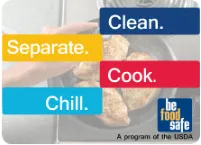One of the contributing factors of obesity is a diet high in calories that is high in fat or high in sugar. Overweight and obesity are risk factors for Type 2 diabetes, high blood pressure, some cancers and cardiovascular diseases like heart disease and stroke.
Below are tips to help you cut down on sugar, especially added sugar intake, so you can achieve the recommendation; at most 30g or 6 cubes of sugar added to all foods in the day.
For everyone
When Shopping
- Read food labels to identify what the added sugars in a product are. They are usually shown on the labels as sucrose, glucose, fructose, maltose, molasses, hydrolysed starch, invert sugar, corn syrup and honey. When you see the added sugars, check how much of them are contained in the product. A food which contains 22.5g of sugar per 100g of the product is very high in sugar while anything below 5g is low.
- Swap products with high sugar content like fizzy drinks, sweetened fruit juices, and squashes with low sugar ones like natural fruit juices and water. Because you are more likely to reach for those high sugar drinks when they are in your stores, it is a good idea to avoid stocking your food stores with them.
When preparing meals
- For meals such as porridge, cereal and homemade drinks like ‘Sobolo’ (Bisarp, hibiscus), swap table sugar for chopped fruits and squeezed fruits juices to meet your taste preference. The fruits will not only improve the ‘taste’ of your food, but also provide you with nutrients such as Vitamin B and C. In the end, you will meet the recommendation of eating 5 portions of fruits and vegetables a day.
- If you drink tea, coffee or chocolate drinks, gradually cut down on the sugar you add till you can drink these beverages without sugar.
- When thirsty, reach out more for water, natural unsweetened fruit juices, and less fizzy drinks and sweetened fruit juices, which are high in sugar.
- When looking for something to munch in between meals, grab a fruit, vegetable, or nut and avoid toffees and chocolate.
- If you are the type who likes to eat desserts after a main meal, decide the number of times in a week or month you will take your desserts. This way you do not eat dessert every day as this is an unhealthy habit. Also when choosing your desserts, pick the ones that are low in sugar content.
- When eating high sugar foods such as cakes, ice cream and chocolate, try to eat smaller portions.
For people who have BMI 25 and above / Overweight and Obese people
If you are overweight or obese, you need to take additional steps.
Apart from cutting down on foods high in sugar and fat, you should also do more physical activity, and increase your consumption of fruits, vegetables, legumes, whole grains and nuts. Also make it a point to get enough sleep, reduce or cut out alcohol consumption and adopt a no smoking habit.
Keep in mind that a dietician or a nutritionist can design a healthy lifestyle plan for you. Let’s connect you to one of our professionals.
For children
Obesity can occur at any age, so as much as possible, we should not introduce children to foods high in sugar. Children who are given high sugar foods at an early age develop a preference for those sugared foods and thereby increase their risk of obesity and its related problems.
Join the Become A Healthier You community today and find support to eat healthier .
Related articles: How to cut down on salt intake, How to cut down on fat intake
Written and reviewed by: Irene Danquah, ANutr
Last page review: 23/12/2021
Next page review: 31/12/2024


